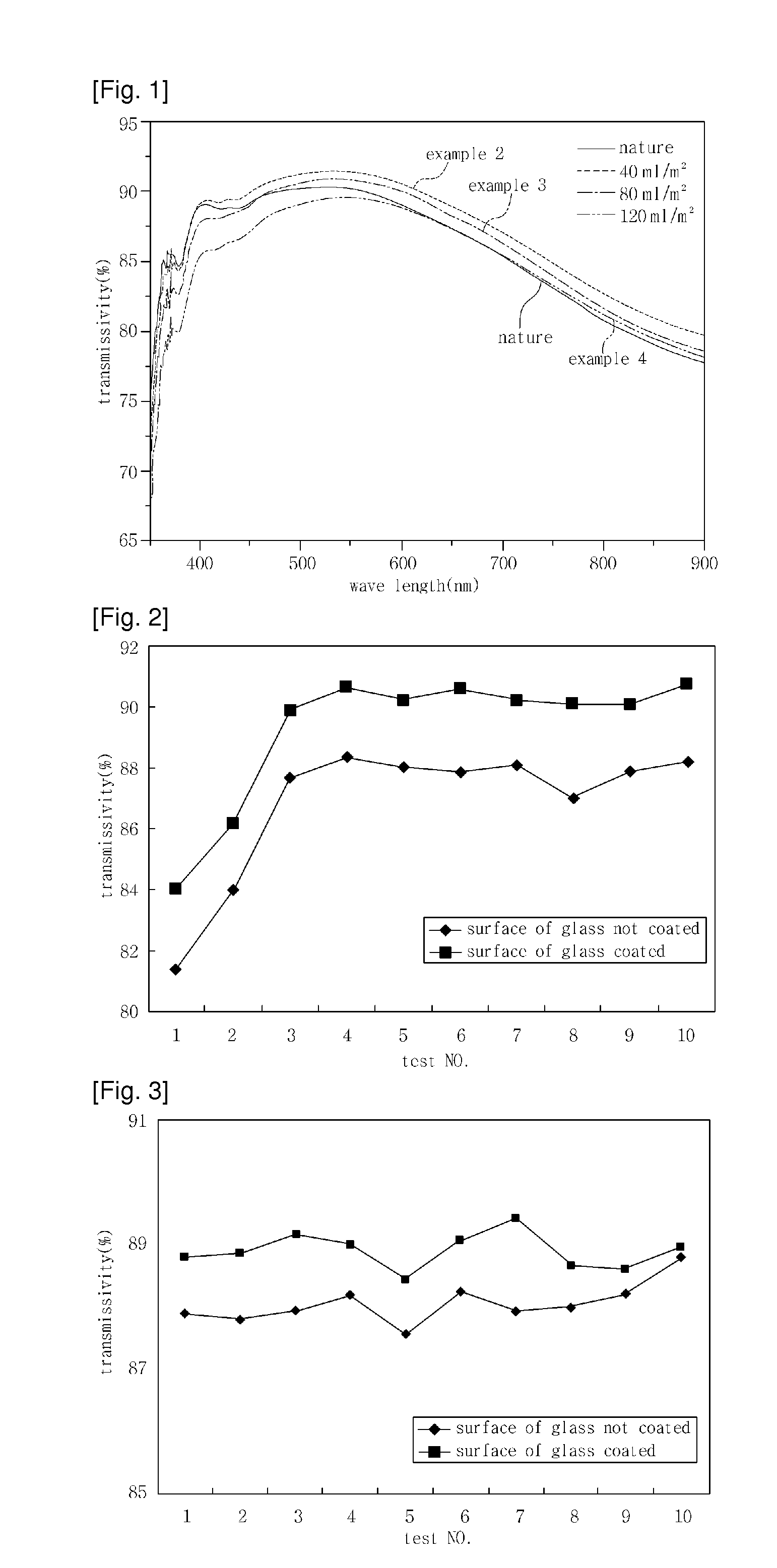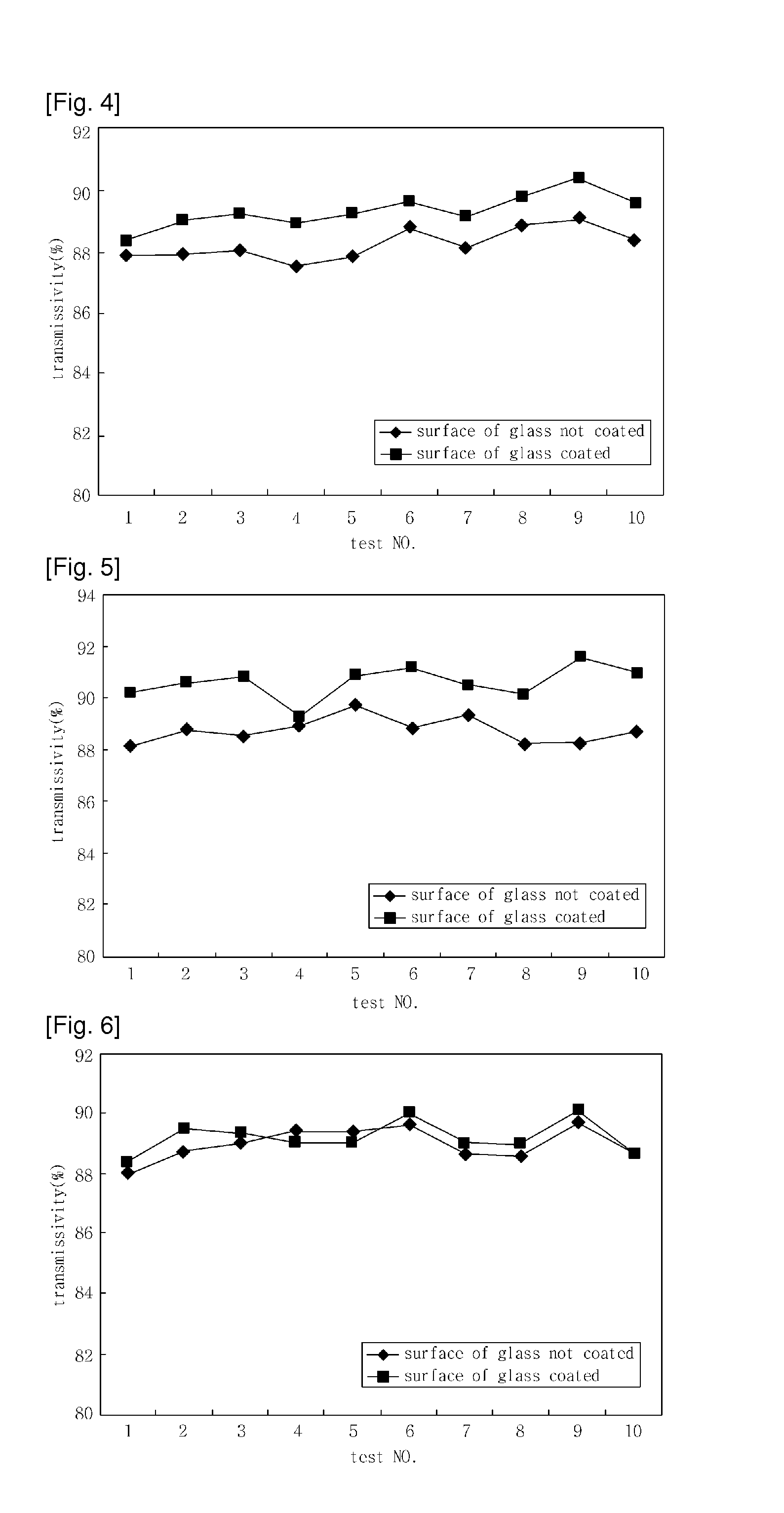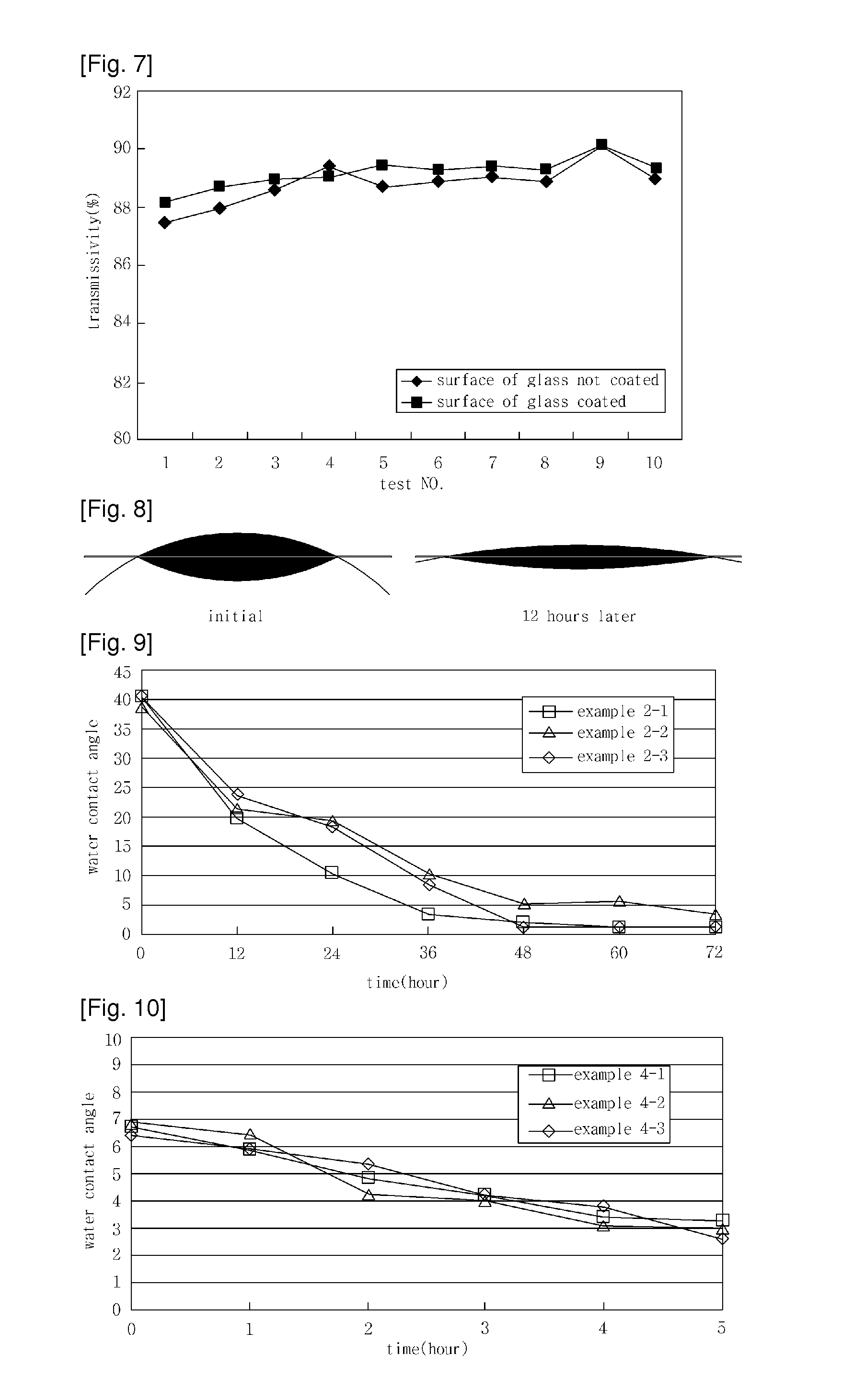Photocatalytic composition for Anti-reflection and the glass substrate coated with the composition
a photocatalytic composition and composition technology, applied in the direction of physical/chemical process catalysts, organic compound/hydride/coordination complex catalysts, etc., can solve the problems of low reflective performance, high antistatic effect, and limited research to maximize raw materials' transparency, so as to prevent incident light energy from scattering, improve optical transmissivity, and increase light efficiency
- Summary
- Abstract
- Description
- Claims
- Application Information
AI Technical Summary
Benefits of technology
Problems solved by technology
Method used
Image
Examples
example 1
Preparation of Antireflective Photocatalyst Composition
[0037]WO3—TiO2 photocatalyst powder was prepared through the method disclosed in Korean Registered Patent No. 578044, filed by the present applicant. The prepared WO3—TiO2 photocatalyst powder had a primary particle size of about 20 nm and a secondary particle size of about 120 nm. The prepared WO3—TiO2 photocatalyst powder was formed into a 1% aqueous photocatalyst solution. A binder having good compatibility with glass and a photocatalyst solution was required in order to fix the photocatalyst on a glass substrate. A 5% inorganic binder solution was prepared by adding tetraethyl orthosilicate to a solvent consisting of ethanol and isopropyl alcohol at room temperature to form a mixed solution and then reacting the mixed solution while heating it to a temperature of 50° C. Subsequently, the prepared photocatalyst and binder were mixed with water and ethanol at a ratio of photocatalyst:binder:water:ethanol of 1:4:3:9, and then t...
examples 2 to 4
Preparation of Glass Test Pieces Coated with the Antireflective Photocatalyst Composition
[0038]Three glass test pieces having a large size of 100 mm×100 mm×5 mm and nine test pieces having a small size of 50 mm×50 mm×3 mm were prepared using commercially available glass. Half of the large sized glass test pieces and all of the small sized glass test pieces were coated with the photocatalyst solution synthesized in Example 1 at application rates of 40, 80, and 120 ml / m2, respectively, using an automatic sprayer having a diameter of 0.8 mm, and were then cured in a drying oven at a temperature of 80˜150° C. for 5 minutes, thereby preparing glass test pieces coated with the antireflective photocatalyst composition. Subsequently, the physical properties of the prepared glass test pieces coated with the antireflective photocatalyst composition were measured.
experimental example 1
UV-Vis Spectrophotometer Test
[0039]The transmissivities of glass not coated with the photocatalyst composition (the curve indicated by “nature” in FIG. 1), a glass test piece coated with the photocatalyst composition at an application rate of 40 ml / m2 of Example 2, a glass test piece coated with the photocatalyst composition at an application rate of 80 ml / m2 of Example 3, and a glass test piece coated with the photocatalyst composition at an application rate of 120 ml / m2 of Example 4 were measured at wavelengths ranging from 350 nm to 900 nm using a UV-Vis Spectrophotometer (10e, manufactured by Cintra Corp.).
[0040]The transmissivities in Experimental Examples 1 and 2 were calculated using the following Equation 1.
Transmissivity (%)=(intensity of light having passed substrate / light intensity of initial light source)×100 (Equation 1)
[0041]The difference in transmissivity between the surface of glass coated with photocatalyst and the surface of glass not coated therewith was calcul...
PUM
| Property | Measurement | Unit |
|---|---|---|
| Temperature | aaaaa | aaaaa |
| Fraction | aaaaa | aaaaa |
| Percent by mass | aaaaa | aaaaa |
Abstract
Description
Claims
Application Information
 Login to View More
Login to View More - R&D
- Intellectual Property
- Life Sciences
- Materials
- Tech Scout
- Unparalleled Data Quality
- Higher Quality Content
- 60% Fewer Hallucinations
Browse by: Latest US Patents, China's latest patents, Technical Efficacy Thesaurus, Application Domain, Technology Topic, Popular Technical Reports.
© 2025 PatSnap. All rights reserved.Legal|Privacy policy|Modern Slavery Act Transparency Statement|Sitemap|About US| Contact US: help@patsnap.com



